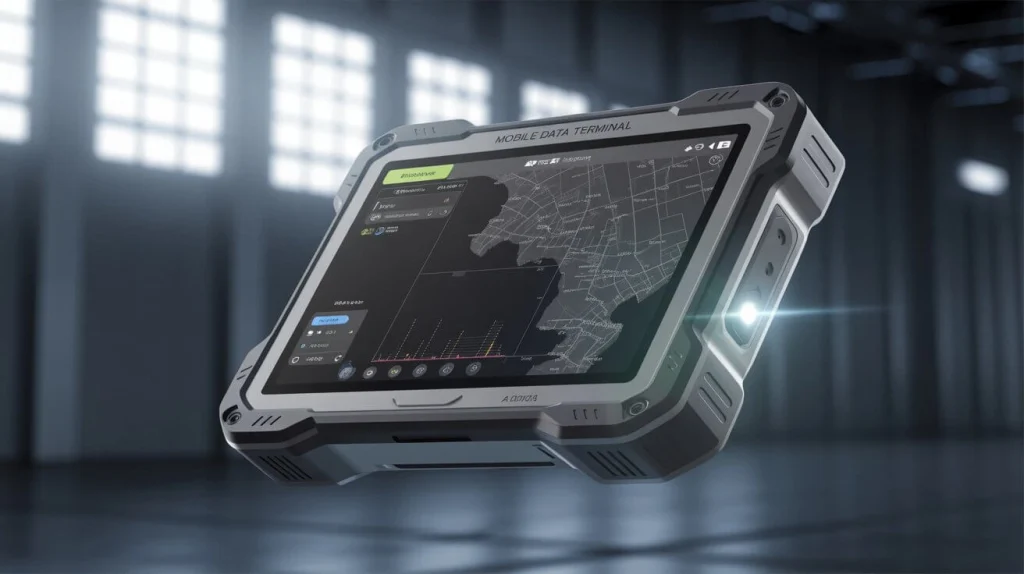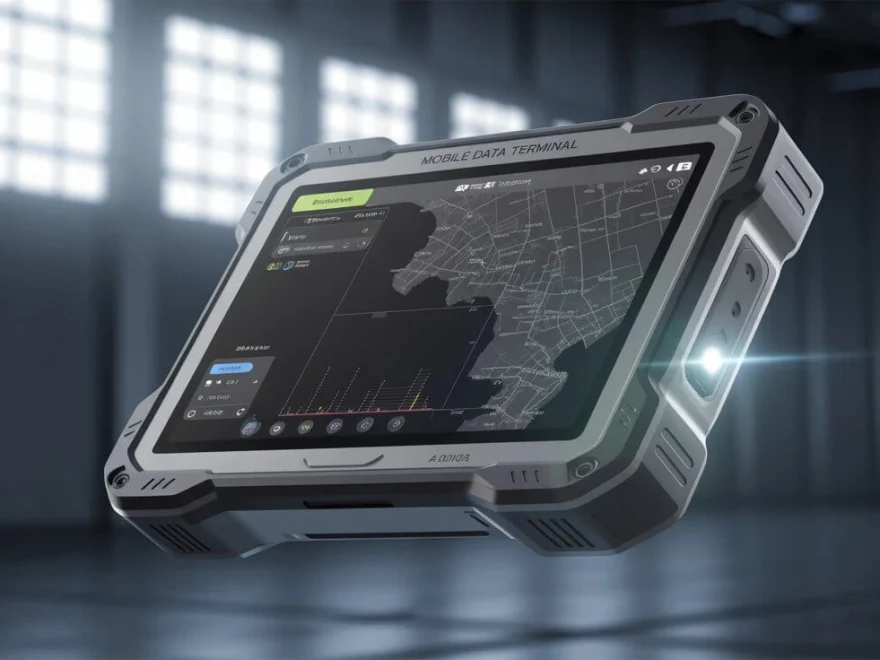Whether you’re coordinating a fleet of delivery vehicles, managing public safety communications, or improving data access for field teams, Mobile data terminal are the cornerstone of real-time, mission-critical operations. This guide explores everything you need to know about mobile data terminals—from their core functions to future-ready technology like 5G and AI integration.

Content
What Is a Mobile Data Terminal?
A mobile data terminal is a rugged, portable computing device used to send, receive, and display digital information in mobile environments. Typically installed in vehicles or carried by personnel, MDTs enable real-time communication between dispatch centers and field operators.
What Are the Main Functions of a Mobile Data Terminal?
MDTs support a range of tasks essential to mobile workforce operations:
- GPS Navigation: Real-time route optimization and location tracking.
- Dispatch Communication: Receive job updates and send status reports.
- Data Entry & Retrieval: Access forms, input data, and synchronize with backend systems.
- Barcode Scanning: Scan goods or ID tags using integrated scanners.
These smart devices are designed to be durable, often IP-rated for water and dust resistance, and are optimized for operation in vehicles or harsh environments.
How Do Mobile Data Terminals Work in Real-World Scenarios?
MDTs are used in a variety of industries where mobile operations are key:
- Public Safety: Police vehicles use MDTs for license plate checks, report filing, and coordination with dispatch.
- Logistics: Delivery fleets track routes, receive package details, and capture signatures.
- Public Transit: Bus operators monitor schedules and communicate with central systems.
- Utilities: Field technicians access schematics, maintenance logs, and safety protocols.
In each of these settings, the MDT provides a secure, reliable link to centralized databases and management platforms.
What Is the Role of a Mobile Data Terminal in Police Cars?
In law enforcement, MDTs serve as the digital nerve center of patrol vehicles. Officers rely on them to:
- Run background checks or license plate lookups
- File reports without returning to the station
- Receive high-priority dispatches
- Navigate to incidents using integrated GPS
By enabling real-time access to mission-critical data, MDTs improve response times and officer safety.
What Are the Limitations or Poor Use Cases?
While MDTs are versatile, they’re not ideal for:
- High-graphics applications like CAD or multimedia editing
- Environments with no cellular or Wi-Fi coverage
- General consumer use, since they’re purpose-built for professional field operations
In such cases, a traditional tablet or desktop terminal may be more appropriate.
Should You Keep Mobile Data On or Off on Android MDTs?
If your android-based mobile data supports SIM cards:
- Keep mobile data ON when you’re in the field and need continuous connectivity for updates or navigation.
- Turn it OFF when using secured Wi-Fi in static environments to save battery or restrict data usage.
This toggle gives users flexibility based on location and task requirements.
How Does a Mobile Data Terminal Differ from a Fixed Terminal?
| Feature | Mobile Data Terminal (MDT) | Fixed Terminal |
| Portability | Installed in vehicles or handheld | Stationary setup |
| Connectivity | Uses mobile data, Wi-Fi, GPS | Ethernet/Wi-Fi |
| Use Case | Field work, dispatch, navigation | Office tasks, customer kiosks |
| Power Source | Vehicle power or battery | Direct power supply |
What Types of Terminals Are Used for Mobile Data Input?
Depending on industry needs, MDTs may include:
- Handheld Terminals – Compact devices for logistics or warehousing
- Vehicle-Mounted Units – Rugged tablets or touchscreens in patrol cars or trucks
- POS Terminals – Used in mobile commerce or food delivery services
- Industrial Tablets – Heavy-duty tablets with high ingress protection (IP65/IP67)
These terminals often feature touchscreens, barcode scanners, NFC readers, or physical keypads tailored to specific use cases.
Why Are Mobile Data Terminals Important for Business Operations?
MDTs improve operational efficiency and field communication in several ways:
- Faster decision-making through real-time data access
- Lower operational costs via route optimization and remote task management
- Improved service quality through better communication with back-office systems
- Enhanced data accuracy due to on-site input and automated syncing
Organizations that rely on mobile operations often see measurable ROI by integrating MDTs into their workflows.
What Are the Future Trends in Mobile Data Terminal Technology?
MDTs are rapidly evolving with innovations that enhance connectivity, intelligence, and durability:
- 5G Integration for ultra-fast data transfer and low latency
- AI-Powered Workflows for predictive routing and automated task handling
- IoT Compatibility for sensor-based data collection in smart fleets
- Voice-Activated Interfaces for safer, hands-free use
As industries continue to digitize, MDTs will play a crucial role in real-time mobile computing.
Final Thoughts
Whether you’re optimizing fleet performance, improving public safety workflows, or modernizing field operations, Mobile data terminal are no longer optional—they’re essential. As mobile data technologies become more intelligent, connected, and durable, MDTs will continue to shape the future of efficient, mobile-first enterprises.
FAQs
Can I use a regular tablet instead of a mobile data terminal?
While possible in some light-use cases, regular tablets lack the ruggedness, integrated vehicle mounts, and dedicated connectivity features of MDTs.
Are mobile data terminals secure?
Yes. Most MDTs come with encryption, secure authentication, and remote management capabilities to ensure enterprise-level data protection.

Jerald is a blogger with a passion for technology who has been writing about the latest in the world of gadgets and gizmos. They are an avid reader of Science-Fiction novels and love to spend time with their wife and kids.

